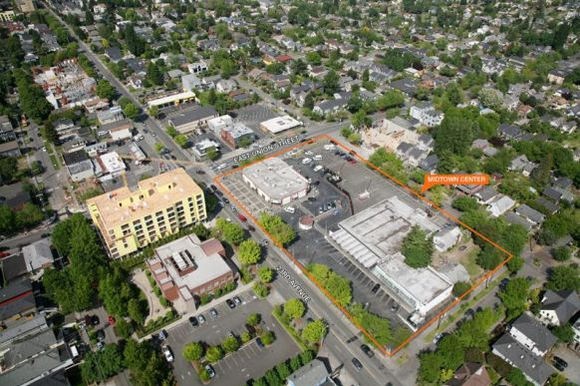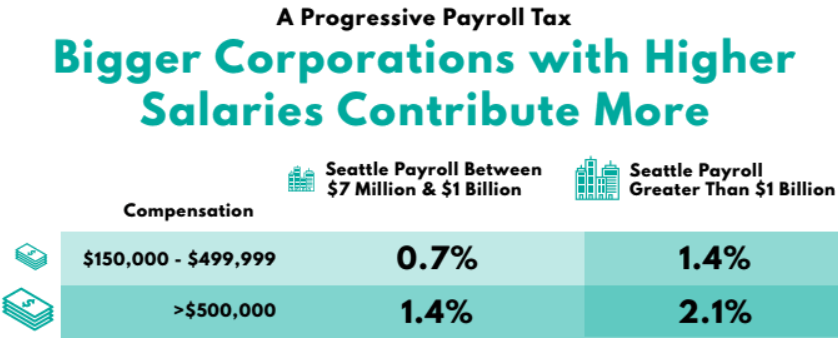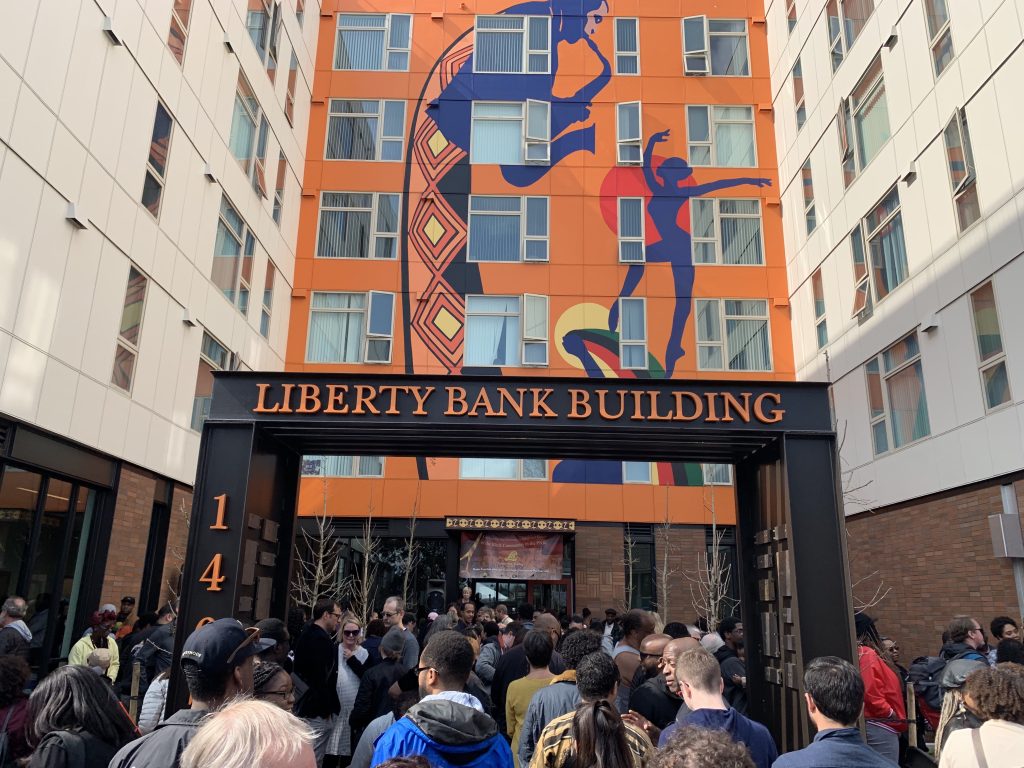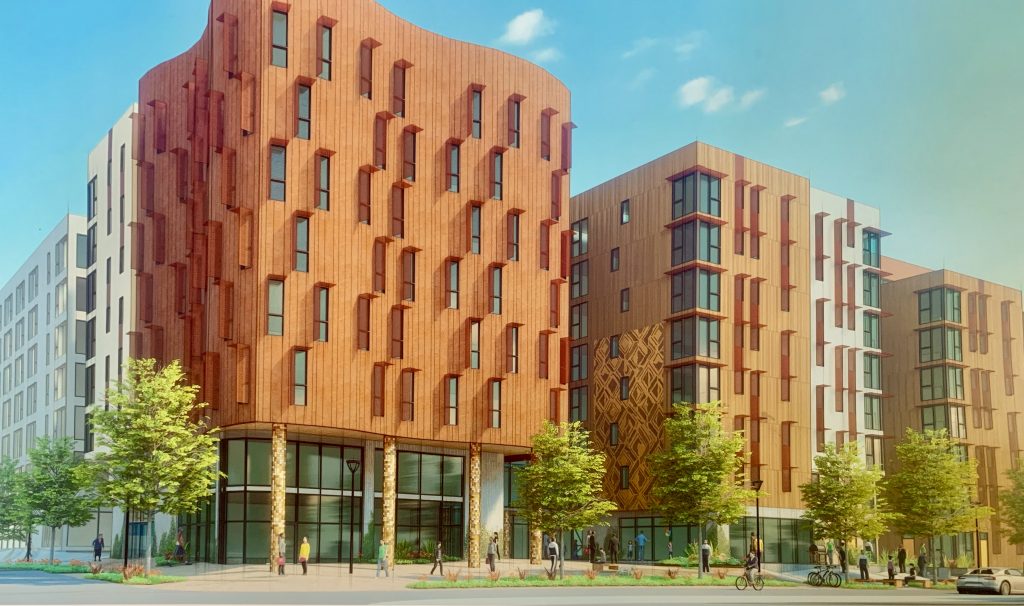
In the Budget Committee yesterday, the Seattle City Council hashed out the spending plan for the JumpStart Seattle payroll tax that passed earlier this month. Among the programs was a pledge to spend $18 million annually in formerly redlined areas of Seattle. Councilmember Kshama Sawant said this would allow the City to build 1,000 affordable homes in the Central District–a historically Black neighborhood that has seen rapid displacement.
“After the historic Amazon Tax victory last week in Seattle, our movement has just won $18 million per year (at least) of the Amazon Tax to be dedicated for affordable Central District homes for Black working-class and poor families. This is truly historic and first-time for our city,” Councilmember Kshama Sawant said in a tweet.
JumpStart Seattle is projected to raise at least $214 million annually by taxing companies with revenues exceeding $7 million on salaries paid to employees making at least $150,000. The City Council voted 7-2 to pass the tax measure with only Councilmembers Debora Juarez and Alex Pedersen dissenting. The tax has a 20-year sunset clause. The $18 million annual investment is expected to create more than 3,000 affordable homes over that 20-year time frame by leveraging state and federal matching funds, according to the City’s analysis.

With collections starting in 2021, the JumpStart spending plan will initially focus on Covid relief and preventing austerity cuts. However, in later years affordable housing will be the primary focus. Councilmember Sawant raised the need in the Central District in particular–which is in her district and an area she racked up votes in 2019 election victory. Although she had earlier called for $50 million annually for the Central District, Sawant introduced an amendment setting aside $18 million annually in 2022 and won the support of her colleagues after some massaging of the language.
Seattle’s original enclave for Black settlers since Black pioneer William Grose first bought 12 acres abutting Madison Street in 1882, the Central District went from 73% Black in the 1960s to less than 15% in recent estimates. That community didn’t form by choice–racial covenants and threats of violence barred Black people from living in many Seattle neighborhoods and racist lending practices barred access to mortgages. The Central District was one of the few neighborhoods where Black Seattleites could call home, but redlining meant many couldn’t put down roots since banks generally wouldn’t lend in these areas.
Thanks to the tenacity of its residents and the mutual support networks that grew, the Central District thrived even as the rest of the city looked at it as the “ghetto.” The first Black-owned bank west of the Mississippi opened in 1968 at 24th Ave E and E Union St, aiming to extend lines of credit to Black people often for the first time. The Seattle Black Panthers patrolled Central District streets in the 1960s and 1970s trying to keep the Seattle Police Department from harassing Black people, as historian and former Seattle City Council candidate Shaun Scott has recounted.
Black residents of the era talk of growing up in a tight-knit community where they felt not just safe but also a sense of belonging. That sense of place echoes through today. Trying to carry on that legacy, filmmaker Inye Wokoma turned his great-aunt Birdie’s Central District home into a Black arts and community space called Wa Na Wari in 2019.
Making Wa Na Wari a home for Black art and community is a way to “signal, both to my family members and my broader community, that their presence is recognized and valued. That they’re welcome here,” Wokoma said in a Crosscut interview.

Africatown formed to in 2013 to advocate for expanding affordable housing and incubating Black-owned businesses. Their first target was the Liberty Bank site, which they succeeded into turning into an affordable apartment complex infused with Black art. Next up is Africatown Plaza–130 affordable homes atop storefronts for local businesses nestled as part of a huge MidTown Center redevelopment.

Even with the efforts by Africatown and Wa Na Wari, the displacement pressures on the Central District remain strong. Amazon’s headquarters is just two miles away and Seattle’s booming Downtown office core is even less–while Capitol Hill is just next door. That proximity has driven up rents, and the onset of the Covid-19 pandemic could be creating a perfect storm for displacement.
The pandemic has hit Black and Latinx communities hard both in terms of health and lost income. The eviction moratorium that Governor Jay Inslee issued and the Seattle City Council extended through the end of year is a needed lifeline but unless renters get real rent relief, we may be looking a ticking time bomb for displacement and homelessness.
Natalie Bicknell reported on the Central Area Housing Plan that Councilmember Sawant released in June joining with Black clergy in a letter to the Mayor and City Council demanding urgent action and framing it as a way to honor George Floyd and people protesting in his name.
The letter, which was signed by Rev. Jeffery of New Hope Missionary Baptist Church, Rev. Lawrence Willis of Truevine of Holiness Baptist Church, and Rev. Willie Seals of The Christ Spirit Church, contains a list of initiatives ranging from specific to broad that the pastors desire to see implemented. It also contains a call for Seattle as a “progressive” city to “honor the legacy of George Floyd and the many unsung heroes who fight for justice and an end to racism” by changing the “landscape after the pandemic so that Seattle becomes a great place for African Americans to live and thrive for generations to come.”
“This is not just about sterile housing. This is about rebuilding a community,” said Rev. Jeffrey of New Hope Missionary Baptist Church. “[W]e need the City to get on board and to help us do this to rebuild villages, to rebuild communities, so we can help each other again like we used to. So we can nurture each other again like we used to.”
The quick progress on the 1,000 home goal set in the letter definitely feels new for a city known for its lengthy legislative processes.
The Seattle City Council’s commitment to fund affordable housing construction in the Central District and other formerly redlined areas is a recognition of the neighborhood’s unique history, mounting displacement pressure, community-based placemaking, and the important of “thriving in place” for Black folks who have survived the waves of displacement pressure thus far.
I’ve seen a few critiques of the City Council’s investment in the Central District as concentrating poverty and furthering segregation, but I couldn’t disagree more. We certainly need to be building affordable housing all across Seattle and changing zoning to make that happen. However, when Black leaders say they want to live in the Central District, grow Black-owned businesses there, and reinvigorate the place-based community networks that carried them through 140 years of oppression in Seattle, we have to listen to them and line up behind them in support.
I’m excited to see the Central District reclaim some of its roots as it grows intentionally into the future.
This story had been updated to note that $18 million annually will be invested in formerly redlined areas, not just the Central District, and will likely create more than 3,000 homes, not just 1,000.
Doug Trumm is publisher of The Urbanist. An Urbanist writer since 2015, he dreams of pedestrian streets, bus lanes, and a mass-timber building spree to end our housing crisis. He graduated from the Evans School of Public Policy and Governance at the University of Washington in 2019. He lives in Seattle's Fremont neighborhood and loves to explore the city by foot and by bike.

